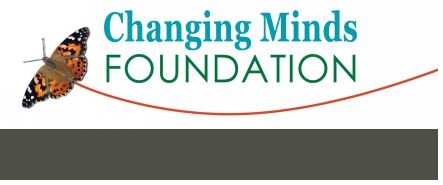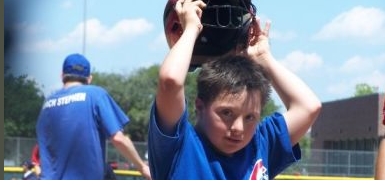
December 8, 2008 ·
Treatment offers ray of hope
Down syndrome protocol ignites debate on use
by Michael Schroeder
The Journal Gazette
Fort Wayne, Indiana
One day recently, Jordan Blevins’ sister, Sarah, caught him doing a newspaper crossword puzzle.
“I was just amazed,” said Sarah, 19, who doesn’t get to see her brother much between work and school – she’s a sophomore at Indiana University-Purdue University Fort Wayne. Still, in the limited time they spend together, she’s noticed marked changes in his spelling and sociability: “He’ll take to people (where) he used to kind of hide and shy away.”
Jordan, 16, had been on the lower functioning end for children with Down syndrome, but now he’s approaching the other end of the spectrum, says his mother, Linda Blevins. She owes that to an experimental protocol developed by a Houston-based woman and parent of a child with Down syndrome.
The protocol Jordan is on is in its infancy. But early signs are encouraging, and some parents aren’t waiting for a formal clinical trial to take action.
Still, there’s much pushback. Major Down syndrome advocacy groups and some doctors and scientists have signed an advisory letter warning that the treatments are untested and potentially harmful. Enthusiastic parents, who have children on the protocol, and some professionals, who have worked with those kids, also advocate more study. But they see the outspoken opposition as baffling and unfounded and an obstacle to what some consider the biggest breakthrough in Down syndrome therapies in decades.
Jordan’s change
Used to be, Linda Blevins said, “We couldn’t get (Jordan) out of the basement.” Now when he goes out, Jordan is the most animated in the group.
His eye-crossing has decreased dramatically. His reaction time, articulation and vocabulary have improved. Homework sessions, once a two-hour struggle, now last 20 to 45 minutes, Blevins said, because he’s less distracted.
“I just know that the kid is better, and I’m so grateful that he’s better,” Blevins said.
It’s not that he’s cured; on a basic genetic level his condition is coded into his makeup. Down syndrome occurs when a person has three copies – instead of two – of the 21st chromosome. It affects more than 400,000 people in the U.S., altering development, causing cognitive delays, raising the risk of congenital heart defects, Alzheimer’s disease and other medical conditions and decreasing life expectancy.
But the protocol – a combination of medications and supplements already on the market but not specifically indicated for treatment of people with Down syndrome – has improved his concentration and cognition, Blevins says. She’s a parent adviser with the Changing Minds Foundation, formed to advance the protocol developed by Dr. Teresa Cody.
Cody, a dentist, leafed through volumes of research to design a daily herbal therapy that contains compounds shown in research at Stanford University to target the underlying cause of learning and memory problems.
At his home on a recent afternoon, Jordan downs some colorful capsules – medication for attention deficit hyperactivity disorder, fatty acids and an antioxidant combination not included in the protocol – reacting not unlike a child eating cooked spinach. He answers some questions, makes eye contact – something he didn’t use to do – and talks excitedly about video games and bowling, before resisting his mother’s attempts to make more small talk. Later, music – mostly rap – rises from the basement with low wailing, Jordan’s attempt at a sing along. For Jordan, who also has autism, music and video games are part of his daily routine to unwind.
Jordan’s mother says he meets the psychological criteria for prescribing Prozac. That’s the portion of the protocol that draws the most concern from parents, in part because of Prozac’s widely publicized link to suicidal thoughts and behaviors in teenagers. (A 2007 comprehensive analysis of antidepressants for children and teenagers says the benefits of treatment trump the small risk of increasing some patients’ chances of having suicidal thoughts and behaviors.)
Linda Blevins says she’s researched the risks and works closely with Jordan’s doctors in implementing the protocol.
Although she’s complimentary of Jordan’s current physicians, Blevins and other parents say symptoms of ADHD – such as difficulty in focusing – often go unheeded. They say doctors, however, might treat those symptoms in patients without Down syndrome.
Others think it’s unwise to use Cody’s protocol without the backing of a large-scale clinical trial.
Waiting for proof
“We would not use this protocol with our daughter or recommend that others use it” without an endorsement from the medical community, and that requires a clinical study, says Joe Bockerstette, a Fort Wayne resident and father of 10-year-old Amy who has Down syndrome.
Bockerstette is chairman of the National Down Syndrome Society, which instead endorsed – with about three dozen professionals and advocacy groups – an advisory statement cautioning parents and medical professionals against using Cody’s protocol.
“There is no scientific evidence to support the use of any of this protocol with people with Down syndrome of any age in order to improve memory or any other aspect of cognition,” a portion of the statement reads. “Nor is there any evidence that this protocol is safe for routine use with people who have Down syndrome.”
This early indictment of the protocol has frustrated and infuriated parents who have seen profound changes in their children and say they’ve been steadfast in their research and worked closely with their doctors in implementing the protocol. Cody, her son Neal and a handful of other children on the protocol and their parents were featured in a film, “Changing a Mind,” which premiered in September in New York City.
Those reached for this story substantiated the claims made in the film, saying their children connected more easily with others, communicated better, showed intellectual improvements in many subjects, were more diligent in their studies and had an easier time retaining information.
A Columbus, Ohio-based special education teacher who tutors kids with Down syndrome has recommended the protocol to families she’s worked with and reported similar findings. Results varied, but side effects were typically non-existent or mild. Jordan, for instance, has trouble sleeping if he takes his ADHD medication too late in the day.
Cody estimated that hundreds of people with Down syndrome are on all, or part of, the protocol, including her son Neal, and there was at least one report of the protocol having initial success in adults. Neal’s pediatrician, Dr. Louis Pottkotter, says it employs only time-tested elements with “phenomenal” results. Pottkotter says if he had a child with Down syndrome, he wouldn’t wait a single day to put them on the protocol.
“These are things that we’ve used for years really. It’s not like it’s anything radical or out of the ordinary,” Pottkotter said. Although it hasn’t previously been used to treat children with Down syndrome, he said, what Cody recommends is safe and proven effective in children.
Before Neal, now 11, was on the protocol, he was uncontrollable, Pottkotter said. Now he’ll come into the office, talk with the doctor – his speech has improved dramatically – and calmly read a book. And he hasn’t suffered any side effects. The blank behind his eyes from two years ago has been replaced by recognition. He’s aware of his surroundings in a way he never was before, Pottkotter says.
Despite such results, Cody is used to her protocol being met with skepticism.
“I’m not saying this is a magic pill,” Cody said. “What I’m saying is, … each kid has improved compared to themselves.”
Bockerstette doesn’t dispute the claims made by parents whose kids are on the protocol, but he says there have been a fair amount of alternative treatments over the years that didn’t pan out for people with Down syndrome.
There is an Alzheimer’s drug called Aricept that, when taken by people with Down syndrome in small-scale clinical trials, appeared to improve language skills. But according to publicly released results of the trials, it didn’t affect cognitive capacities, said a physician board member of National Down Syndrome Society.
There is no medication to improve cognition in people with Down syndrome, said Dr. Brian Skotko, a pediatrician with Children’s Hospital Boston. He acknowledged that drugs like Prozac have been on the market for years but said they haven’t been tested for use in people with Down syndrome.
Bockerstette says he and his family take a conservative approach. He’d consider drug therapy, but “it would have to be something pretty spectacular.”
Winning conservative adherents requires publicized research. And research for Down syndrome therapies is something most everyone – Bockerstette included – says is underfunded.
In the meantime, Skotko says it’s up to parents, working with their doctors, to decide what’s best for their children. But without more evidence he doesn’t think many doctors will back the protocol.
No time to waste
So Craig Garner is busy trying to raise money.
Garner is a professor of psychology and behavioral science and the coordinator of the Down Syndrome Research Center at Stanford University. His research of mice modeling Down syndrome – with extra copies of the mouse equivalent to human chromosome 21 genes – is central to Cody’s protocol. It showed that the inhibitory brain cells signal too strongly, impairing the brain’s ability to retain what is learned.
“Down syndrome is just like riding the brake all the time; you just can’t encode new information,” Garner said. His team discovered a drug therapy for Down syndrome that addresses the issue, essentially removing the brake.
He said he hopes to begin testing Cody’s protocol as early as next spring but getting the necessary funding is a major obstacle.
The centerpiece of that protocol, Ginkgo biloba, is a plant extract made up of many compounds. The trick will be isolating and then developing a pure compound that can be tested and replace it. (Critics say since it’s not entirely known how the plant extract works it shouldn’t be used for treatment. Proponents say it’s taken in small doses, adding that it’s been used for thousands of years.) Cody has said that her protocol is just the first step – albeit a big one – and she’s open to drugs that might replace individual components.
Garner estimates it would probably cost $1 million to appropriately test the protocol Cody developed. Initial testing of just one compound that could supplant Ginkgo biloba could reach $4 million to $5 million.
But if the treatment does get its day in the sun, it could prove the biggest conceptual shift in Down syndrome therapy since children were pulled from institutions in the 1960s, Garner said.












